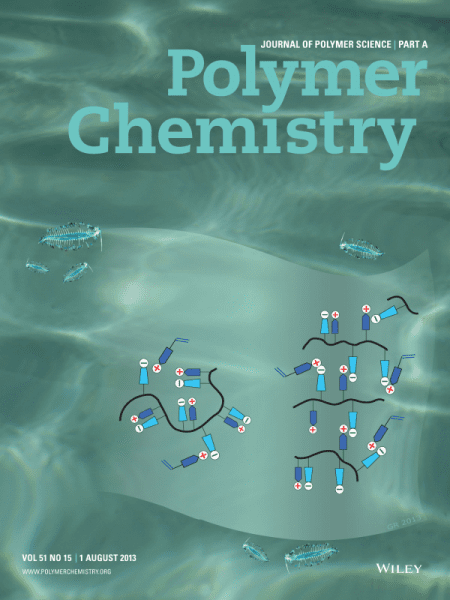 In Volume 51, Issue 15 of the Journal of Polymer Science Part A: Polymer Chemistry the editors are spotlighting four significant research articles: “Preparation of Novel Cyclic Olefin Copolymer with High Glass Transition Temperature,” “Dendron-Polymer Conjugates via the Diels-Alder “Click” Reaction of Novel Anthracene-Based Dendrons,” “Isotactic Poly(propylene-co-1-pentene-co-1-hexene) Terpolymers: Synthesis, Molecular Characterization, and Evidence of the Trigonal Polymorph,” and “Facile One-Pot Method of Initiator Fixation for Surface-Initiated Atom Transfer Radical Polymerization on Carbon Hard Spheres.”
In Volume 51, Issue 15 of the Journal of Polymer Science Part A: Polymer Chemistry the editors are spotlighting four significant research articles: “Preparation of Novel Cyclic Olefin Copolymer with High Glass Transition Temperature,” “Dendron-Polymer Conjugates via the Diels-Alder “Click” Reaction of Novel Anthracene-Based Dendrons,” “Isotactic Poly(propylene-co-1-pentene-co-1-hexene) Terpolymers: Synthesis, Molecular Characterization, and Evidence of the Trigonal Polymorph,” and “Facile One-Pot Method of Initiator Fixation for Surface-Initiated Atom Transfer Radical Polymerization on Carbon Hard Spheres.”
Cyclic olefin copolymers (COCs) possess beneficial properties for applications in heat-resistant and optical fields. However, the high glass transition temperature influences the thermal stability of the COC, determining its end uses. Yue-Sheng Li and associates report novel bulky cyclic olefins synthesized via Diels-Alder reactions. By copolymerization of bulky cyclic olefin comonomers with ethylene, high glass transition temperatures are easily attained compared to commercial COCs.
Attachment of polyethylene glycol (PEG) to polymer drug conjugates offers increased bioavailability, reduced toxicity, and prolonged residence. In addition, dendron-polymer conjugates can be utilized to fabricate funtionalizable hydrogels. Amitav Sanyal and colleagues synthesized novel dendron-polymer conjugates that allow access to multivalent PEG polymers using the Diels-Alder cycloaddition reaction. The linear-PEG polymers contain several hydroxyl groups at chain ends for further functionalization.
Researchers introduce metallocene catalysts that can be used in the preparation of certain materials rather than previously used Ziegler-Natta catalysts leading to narrower molecular weight distributions. María L. Cerrada and collaborators describe the synthesis of polypropylene-co-1-pentene-co-1-hexene terpolymers at different global compositions in comonomers. As comonomer content was increased, intrinsic viscosity decreased pointing out a reduction in molecular weight with increasing composition in comonomers. Cerrada suggests further study is planned to elucidate the relationships between the crystalline structures produced and their related properties.
Carbon hard spheres (CHSs) have the potential for a broad range of applications including adsorbents, separation media, catalyst supports, and additives in lubricants. CHSs incompatibility with most solvents and bulk polymers, however, has prevented their utilization. Scott M. Grayson and colleagues report CHSs with well-defined polymer grafts by carrying out surface-initiated atom transfer radical polymerization in only two synthetic steps. Grayson expects that these grafted CHSs could be efficient filers for the fabricaton of reinforced polymers.

















